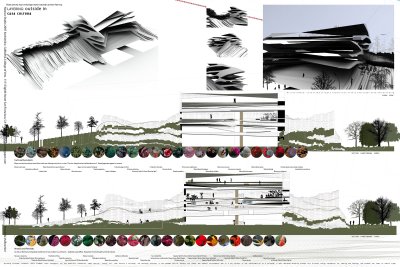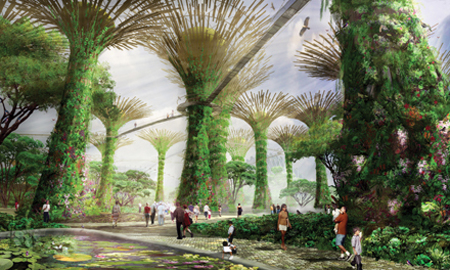
While flipping through the pages of (totally not-green-related) Fader Magazine the other day, I came across a little blurb on these beautiful hand-carved wooden glasses in the style section. Intrigued, I went to the website for Urban Spectacles of Wood, where I became entranced by the truly nature-inspired craftsmanship of Scott Urban, the brain and hands behind these beautiful spectacles. Urban designs and hand carves each pair of frames (or carves frames that you design) from an array of ‘eccentric and durable hardwoods,’ as well as other materials such as stone, aluminum and more. The wooden glasses are as lightweight and durable as the plastic ones most of us are used to, and the natural pores of the wood actually breathe with your skin and contour to the shape of your dome.

For you spectacle-wearing wax enthusiasts out there, Urban even fashions frames from records:
Beer lovers? Check these hilarious yet artfully crafted beer goggles (made from actual beer bottles):
Rogue Dead Guy Ale, an excellent choice.

Die hard cyclists? Yes, Urban has even made frames out of bike parts:
Is there anything out there this ninja-worthy craftsman cannot fashion into spectacles??
As we at green.mnp care about our forests, it is important to point out that so does Urban. He gets the exotic woods for his spectacles through a couple lumber companies, Rare Earth Hardwoods and L.L. Johnson Lumber. L.L. Johnson is Forest Stewardship Council certified. Rare Earth Hardwoods sources its exotic wood from Brazil through its sister company Amazon Timber Frames (ATF), and maintains that the wood is sourced in an environmentally sustainable way:
[Richard Paid, President] spends one in ten days a year in Brazil, and he is very sensitive to concerns about preserving its greatest natural resource. “Our goal is to have as little impact on the environment as possible while still producing wood products,†he says.
A little-known fact to many outside Brazil is that many times, even the trees being cut down legally to clear the land for private farming and ranching are subsequently either left on the ground to rot or are burned. That’s where ATF comes in. ATF and its on-site partner, Zero Impact Brazil (ZIB), make arrangements with landowners to buy and remove this unwanted timber. ZIB’s open books confirm that the two companies are committed to ecologically sound business practices and are therefore, in essence, what the timber industry calls a “green†operation. Says Paid: “We don’t cut any trees. We’re not taking raw resources and leaving, but rather salvaging what would otherwise be wasted and whose burning would contribute to air pollution. Our business also helps the country’s economy by creating well-paying jobs for local craftsmen, something that is desperately needed in the heart of Brazil’s Amazon region.â€
To learn more about Urban Spectacles of Wood (and be entertained for hours), check its website urbanspectacles.com.





















